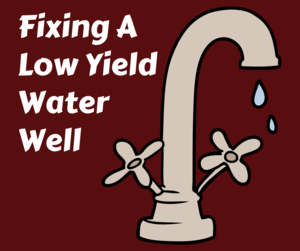CALL TODAY 1-800-441-6281
CALL TODAY 1-800-441-6281

Improved Water Pressure Can Help You Sell a Home
Low or inconsistent water pressure is a major homeowner inconvenience. Home buyers expect water pressure that remains constant even if someone flushes a toilet or turns on the dishwasher. If you represent a seller whose home has low or inconsistent water pressure, there are a few simple fixes you can do to restore the flow of water throughout the home.
Water pressure refers to the force behind the water that pushes it through the home. It is measured by pounds per square inch (psi) and should fall somewhere between 40 psi and 60 psi. If the house uses public water, it is controlled by the municipal water system. For homes with a private well, water pressure is controlled by settings on the well pump.
WELL WATER PRESSURE TANK
For homes with wells, owners may be able to fix low-pressure problems by adjusting their pressure tank. These tanks have gauges which tell the homeowner how much pressure is behind the water flowing through the pipes. If it is below 40 psi, the pressure should be adjusted.
If the water pressure only drops when people in the home are operating multiple water-using appliances, the problem can often be fixed with a pressure regulating system installed between the pump and the pressure tank. This economic solution automatically adjusts the flow to a preset pressure. This can also be a solution for condominiums on the top floor of a building, or for homes at the end of the public water system line.
OLD FAUCETS AND TOILETS CONTRIBUTE TO PRESSURE ISSUES
If you notice the home has outdated bathrooms, appliances, and older water fixtures, you should recommend the sellers upgrade before putting the home on the market. Not only will this increase the value of the home, it can increase water efficiency. Since 1992, the amount of water used by fixtures in the United States has been federally regulated. Modern kitchen and bathroom sinks vary from 2.2 gallons per minute to 1.5 gallons per minute and modern showerheads have a flow rate of 2.5 gallons per minute.
Older fixtures have higher flow rates that can be more than twice that of modern fixtures. Older appliances, like dishwashers and washing machines, not only use more electricity but use more water than modern models. While refitting a home’s appliances may be more than the seller is willing to invest, upgrading water fixtures is a relatively inexpensive fix that can reduce fluctuations in pressure, conserve water and increase the look and value of the home.
LOW WATER YIELD
It’s important to know, however, that low water pressure is not always a water pump or fixture issue. Often, the cause is low volume. Volume is the amount of water that travels through the pipe and is regulated by the size of the pipe and the fixture. Adding water pressure does not address the need for more water in the system and can damage a home’s water system over time.
Low volume could be caused by an inadequate water supply from the home well, or from inadequate piping. Most pipes run from wells or municipal water systems are less than an inch in diameter. If a well is hundreds of yards from the home it serves, the pipe must be large enough to allow more water flow. Home additions that require plumbing, such as a new bathroom, can also suffer from low volume. If pipe length is added, it can decrease water pressure if the system’s piping isn’t upgraded. Make sure to check the flow of water from all faucets and remember, just because the bathroom is new doesn’t mean it has the best water pressure.
Fixing water pressure and water volume problems is not easy, which is why Skillings & Sons recommends calling a water system professional before launching into a project. In homes where there is too much pressure, the plumbing pipes, fixtures and appliances wear out faster and can lead to catastrophic failure. Before recommending a fix, make sure to have the number of water system specialist handy to offer advice.

